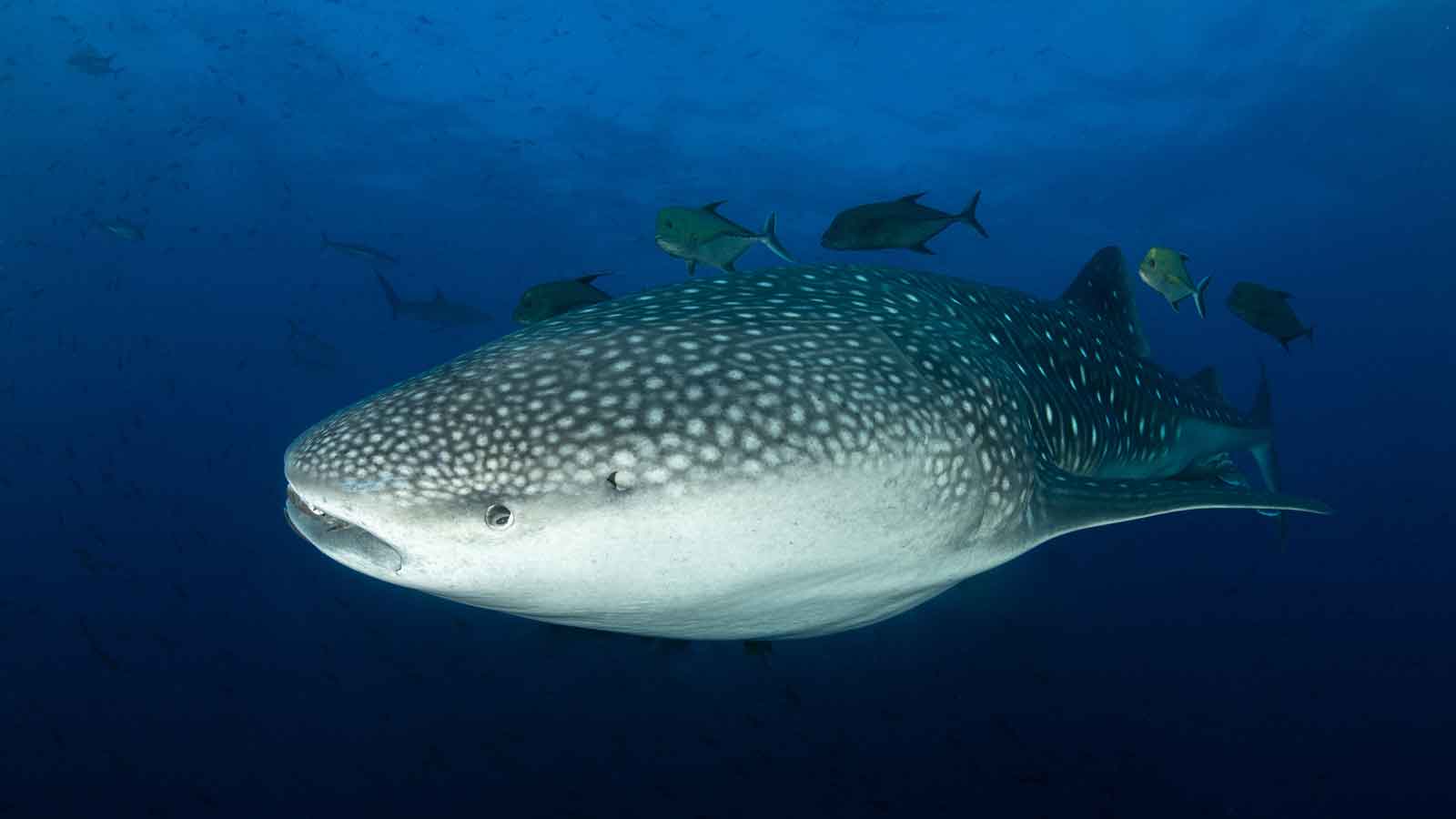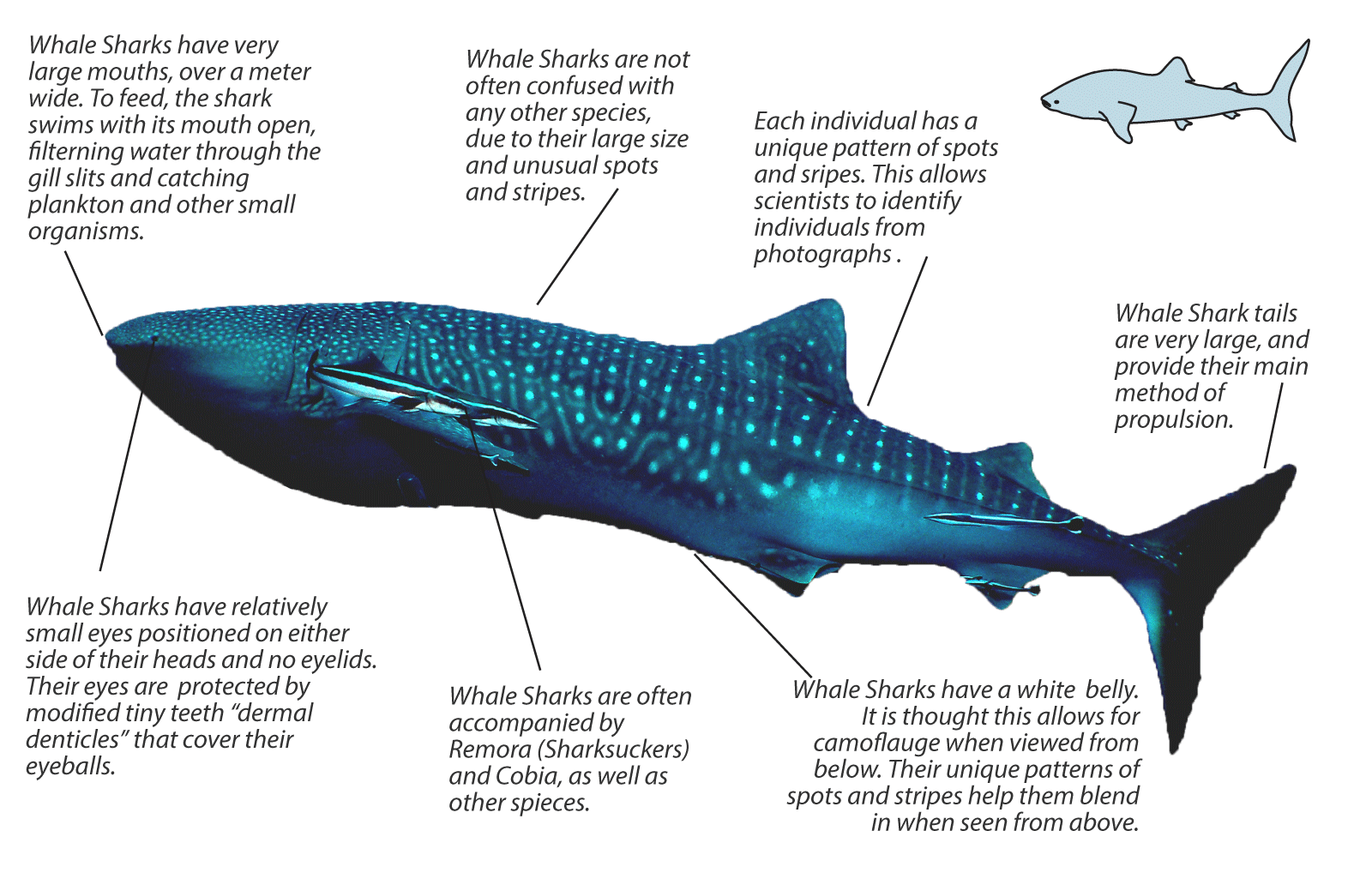

In general, they are solitary animals but are known to aggregate in certain areas. Despite their large size, they are curious and gentle in nature and pose no threat to humans. Swimming with Whale Sharks is possible in a number of locations around Asia, including the Philippines, Thailand and Indonesia.
Whale Sharks are thought to give birth to as many as 300 young, which is unusual for an animal of this size. Pups measure only about 45 centimeters at birth. Only around 10% are thought to make it to adulthood. Their childhood years last until they are around 25 years of age, while adults are thought to live for up to 150 years. As a result of their longevity, they have a long reproductive cycle.
While filter feeders, they actually have 300 rows of tiny teeth that are used for feeding.
Whale Sharks are one of the most fascinating marine species to learn about, and certainly one of the most extraordinary to see.
Thought to have outlasted the dinosaurs, relatively little is still known about Whale Sharks despite their vast size.
Whale Sharks can weigh as much as three elephants, approximately 20 tons! They are known to grow to 12 meters in length, with unconfirmed reports of individuals up to 18 meters in length.
SPECIES: 1
SIZE RANGE: 5-12 m
DISTRIBUTION:
Whale Sharks are found in tropical and subtropical waters around the globe..
HABITAT:
Whale Sharks are found in both coastal and oceanic waters. They are often seen near the surface, but known to dive to depths well below 1000 meters
THREATS:
Whale Sharks are classified as endangered. Numbers have reduced by as much as 63% in the last century. They are threatened by human activity and fishing.
IDENTIFICATION TIPS
Whale Sharks are easy to identify due to their sheer size and unique skin pattern. While they can and do dive to great depths, they are often found at or near the water’s surface.
If you spot a Whale Shark and get a photo, submit it to the Wildbook - a global database of whale shark sightings that scientists use to learn more about these incredible animals.
Ben Phillips